The Whaleback Lookout allows views over the hills of western Tasmania. It is a very short walk of about 120 metres from a car park on the Pieman Road.
Walking to Whaleback Lookout, Tasmania
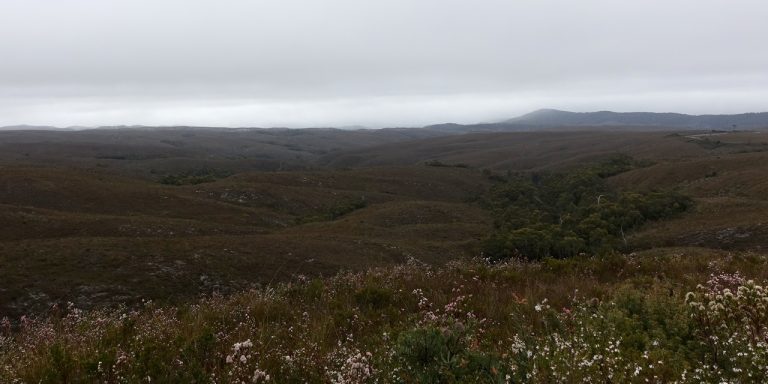

The Whaleback Lookout allows views over the hills of western Tasmania. It is a very short walk of about 120 metres from a car park on the Pieman Road.
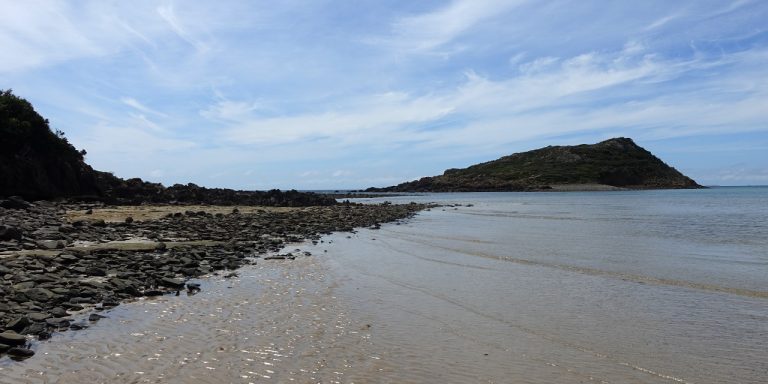
Tomahawk Point is a coastal feature near Tomahawk, Tasmania, Australia. A short walk leads from Tomahawk to Tomahawk Point.
This part of Tasmania could use some more creative nomenclature: Tomahawk Road led to Tomahawk, where we parked near Tomahawk Beach and walked across the Tomahawk River to reach Tomahawk Point and look at Tomahawk Island.
Tomahawk Road led north off Waterhouse Road. It took 10 minutes to drive from there into Tomahawk. Once there, the car park for Tomahawk Point was a left turn onto Morgan Esplanade, and then another left turn to the car park.
All roads were sealed until the final 200 metres of Morgan Esplanade. Drivers wishing to avoid any gravel could easily park there and walk the additional distance.
Continue reading “Walking to Tomahawk Point, Tasmania”
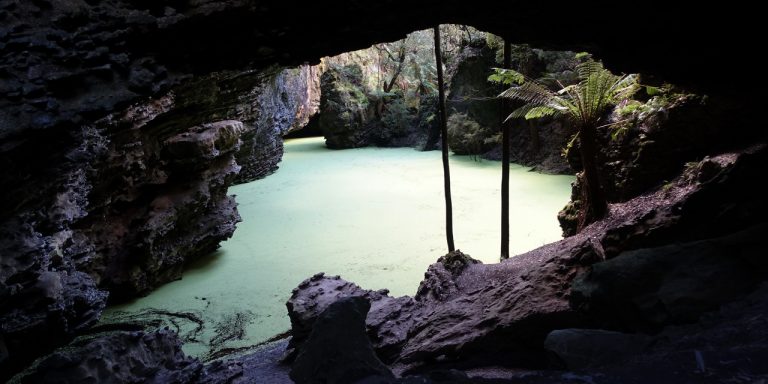
Trowutta Arch is a geological feature south of Smithton, Tasmania, Australia. It is a natural arch eroded out of limestone. A walking track leads to the arch and an adjacent flooded sinkhole.
Trowutta Arch was a long way from most of Tasmania. From anywhere not already on the west coast, it meant driving:
These roads passed through some scenic country, but each was progressively narrower and slower to drive on.
Trowutta Road and Reid’s Road were part of the Tarkine Drive, which looped past several other features of the Tarkine.
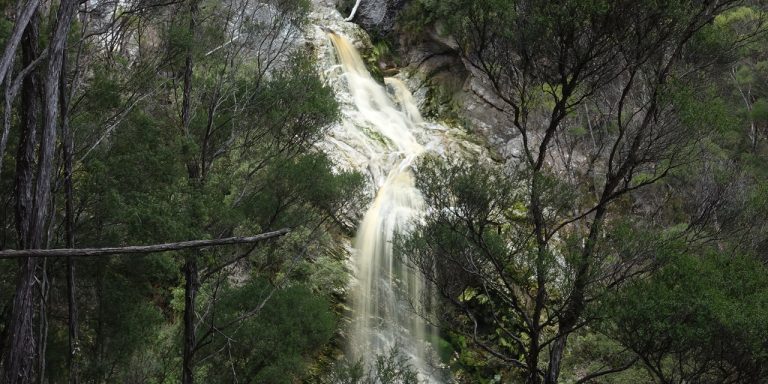
Detention Falls form on the Detention River, near Wynyard, Tasmania, Australia. A walking track leads to two views of the falls.
Older books that mention this walk may refer to a lookout platform. Parks & Wildlife engineers declared the lookout unsafe in 2008, and later dismantled it. A Severe Hazard Area sign near the start of the walk advised against proceeding on the track at all. As the sign said, continue on the walk at your own risk and taking your own responsibility.
This walk also passes through farm gates and paddocks. Take care around the electric fences and take no action to make landowners regret having a walking track through their property.
From the Bass Highway, the best route to Detention Falls was to turn south onto Myalla Road. This reached an intersection with Hawley’s Road. Hawley’s Road was unsealed for its two kilometre length, which ended in patch of gravel for parking cars and a gate labelled “Falls Track”. There were also two private farm driveways, both labelled to make it clear that they were not the way to the falls.
Continue reading “Walking to Detention Falls”
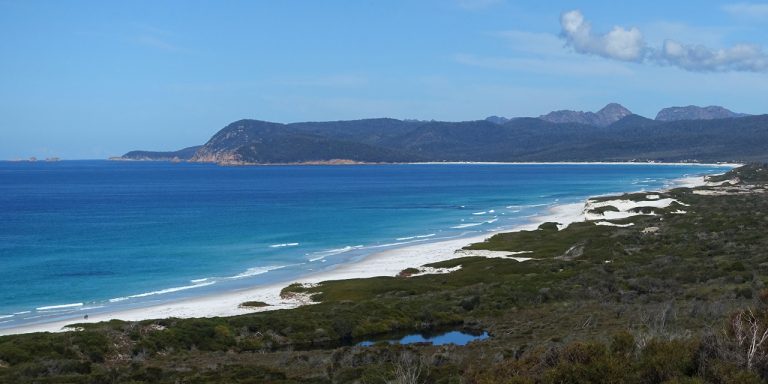
The Friendly Beaches are a long expanse of beach in Tasmania, Australia. They are just north of the famed Freycinet Peninsula on Tasmania’s East Coast. A scenic lookout overlooks the beaches.
The Friendly Beaches lie within the Freyincet National Park, so visitors will need a current National Parks Pass.
The access to Friendly Beaches was from Cole’s Bay Road, which also led to Freycinet Peninsula. Friendly Beaches Road turned east off Cole’s Bay Road, then divided after about 1.9 kilometres. North (left) from the fork passed the Friendly Beaches Scenic Lookout.
Friendly Beaches did not have extravagant amenities at the time of our visit in September 2016. All of Friendly Beaches Road was unsealed, and the only facilities were toilets without running water at each end of the road. However, Friendly Beaches also experienced a fraction of the crowds that flocked to Freycinet Peninsula.
Continue reading “Walking to the Friendly Beaches Scenic Lookout”
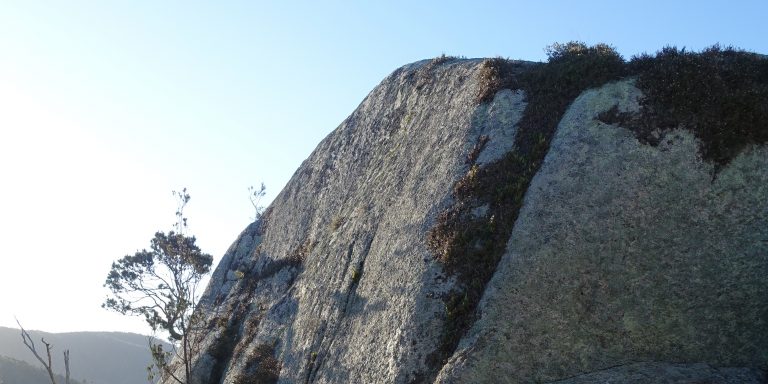
Lookout Rock is a granite outcrop within the town of Bicheno, Tasmania, Australia. A short loop walk circles the rock.
There was no really good road to Bicheno from the rest of Tasmania. The logical drive from Hobart would be along the Tasman Highway up the east coast. From Launceston it would be fastest to drive south to Campbell Town and east past Lake Leake, but might be prettier to drive through Fingal and St Mary’s.
Once in Bicheno, the simplest place to start the walk from was from the turning circle at the east end of Morrison Street. Morrison Street led directly off Burgess Street, which was part of the Tasman Highway as it passed through Bicheno.
An alternative car park was at the north end of Little Street, although there was less space there.
All road approaches to Lookout Rock were sealed.
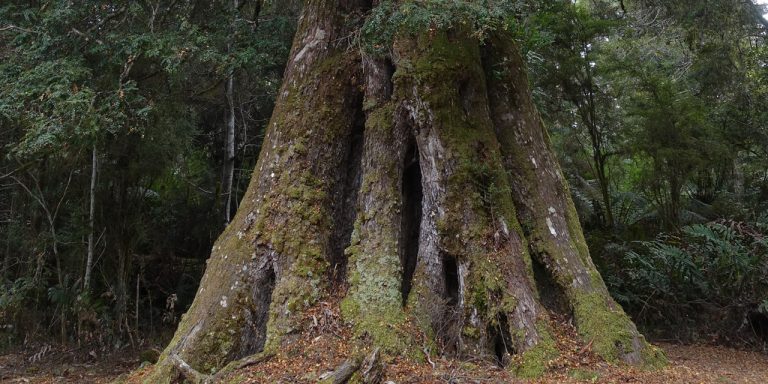
The Weldborough Pass Rainforest Walk is a short bushwalk in northeast Tasmania, Australia. It is an accessible way to see the myrtles and treeferns that make Tasmania’s cool temperate rainforest so distinctive.
Navigating in the general direction of the walk was easy – just drive the Tasman Highway between Weldborough and the junction to Lottah Road. While the highway was sealed for its entire length, it had some tight curves. Respect any yellow signs recommending low speeds around hairpin bends, even if the recommended speed is as low as 25 km/h.
The car park for the walk was on the south side of the highway. Signs in both directions warned of “Weldborough Pass Rainforest Walk 200m,” but it would still be easy to miss.
Continue reading “Walking the Weldborough Pass Rainforest Walk”
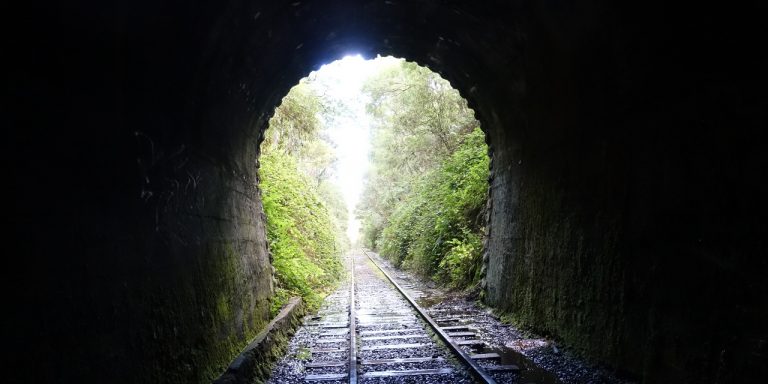
During the late 19th Century, railways were a vital economic and social link. They still took some time to spread across Tasmania, due to the inconvenient number of mountains and rivers. This is evident in the history of the North-Eastern Line, which opened from Launceston to Scottsdale in 1889, with extensions to Branxholm in 1911 and Herrick in 1919. The North-Eastern Line included a rare feature: a 704-metre tunnel. This was so unusual for Tasmania that the locality was named “Tunnel” and the nearby station was named “Tunnel Station”.
With increased use of road vehicles, use of the North-Eastern Line slowed from the 1960s onwards and ended in 1992. However, many sections of the old line may be walked. A 24 kilometre section of line from Tulendeena Station at Billycock Hill to Scottsdale opened in 2015. This was the North East Rail Trail, with plans to eventually cover the full length of the old North East Line for walkers, cyclists and horse riders. As of March 2017 North East Rail Trail work to replace tracks with gravel had not reached Tunnel, but the area was accessible to walkers who didn’t mind stepping between sleepers.
The roads to the tunnel were helpfully named “Tunnel Road” (which passed over the top of the tunnel) and “Tunnel Station Road” (which led to the car park). Both were unsealed, with a combined length of 2.2 kilometres. Tunnel Road began about 6.5 kilometres north of Lilydale, turning west off Golconda Road. Tunnel Station Road then turned south off Tunnel Road.
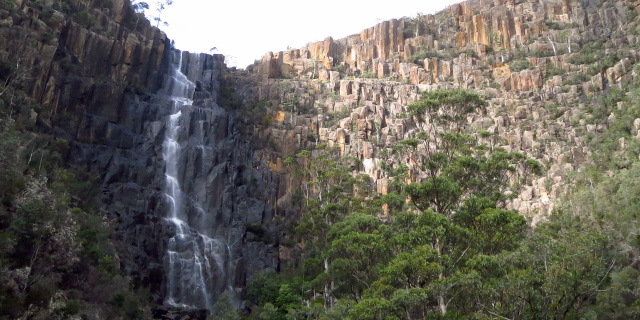
Pelverata Falls form where Pelverata Creek flows west off Snug Tiers on the Huon Peninsula, Tasmania, Australia. The walking track described here leads from Crosswells Road to a lookout below the falls.
Two road routes led to the start of the walking track. Both were slow driving due to the many bends.
Crosswells Road was also unsealed but only a kilometre long, ending in a car park at the start of the Pelverata Falls Track.
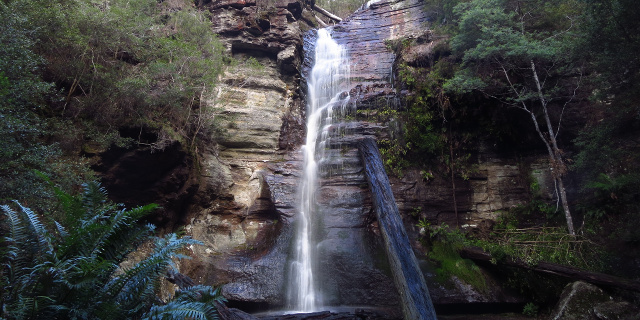
Snug falls form where the Snug River flows off Snug Tier, near the town of Snug on the Huon Peninsula, Tasmania, Australia. A short walk leads to the base of the falls.
First we drove to the town of Snug, on the eastern side of the Huon Peninsula. Roads on the peninsula have more hills and bends than maps may suggest, so allow plenty of time for this part. From, Snug, Snug Tiers Road led west off the Channel Highway. This soon changed from sealed to unsealed, and split in two, with Snug Tiers Road continuing on the right and Snug Falls Road on the left. We took the left turn onto Snug Falls Road and followed it to the clearly signed car park.